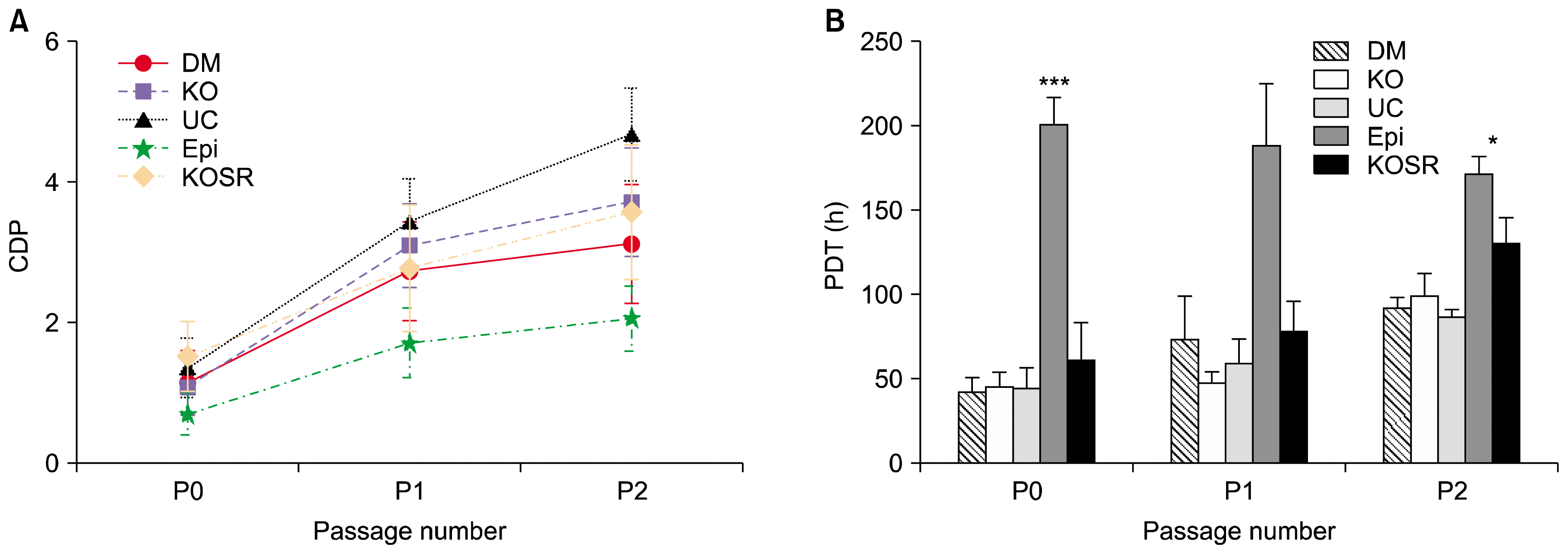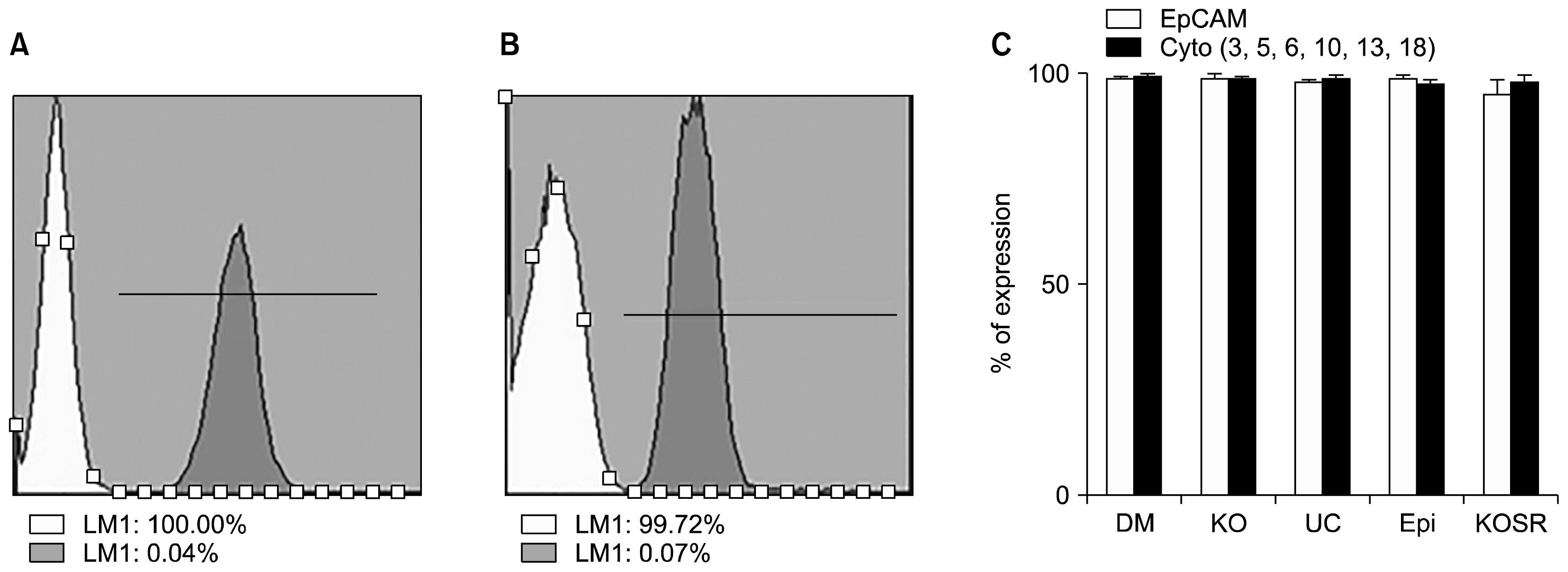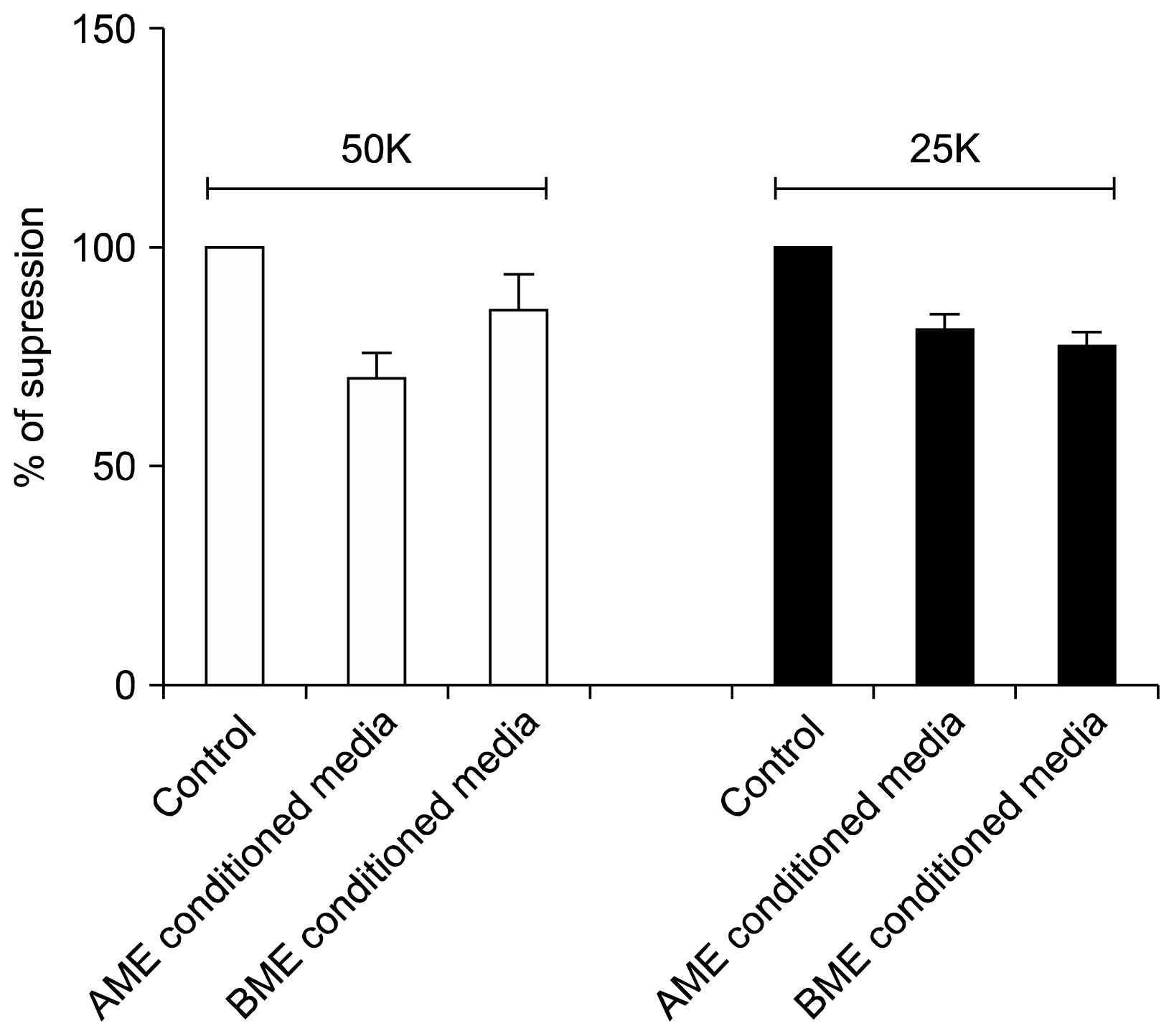1. Mason C, Brindley DA, Culme-Seymour EJ, Davie NL. Cell therapy industry: billion dollar global business with unlimited potential. Regen Med. 2011; 6:265–272. DOI:
10.2217/rme.11.28. PMID:
21548728.

3. Varkey M, Ding J, Tredget EE. Advances in skin substitutes-potential of tissue engineered skin for facilitating anti-fibrotic healing. J Funct Biomater. 2015; 6:547–563. DOI:
10.3390/jfb6030547. PMID:
26184327. PMCID:
4598670.

5. Ackermann K, Borgia SL, Korting HC, Mewes KR, Schäfer-Korting M. The Phenion full-thickness skin model for percutaneous absorption testing. Skin Pharmacol Physiol. 2010; 23:105–112. DOI:
10.1159/000265681.

6. Vig K, Chaudhari A, Tripathi S, Dixit S, Sahu R, Pillai S, Dennis VA, Singh SR. Advances in skin regeneration using tissue engineering. Int J Mol Sci. 2017; 18:E789. DOI:
10.3390/ijms18040789. PMID:
28387714. PMCID:
5412373.

7. Tan JL, Tan YZ, Muljadi R, Chan ST, Lau SN, Mockler JC, Wallace EM, Lim R. Amnion epithelial cells promote lung repair via lipoxin A4. Stem Cells Transl Med. 2017; 6:1085–1095. DOI:
10.5966/sctm.2016-0077. PMID:
28371562. PMCID:
5442827.

8. Fanti M, Gramignoli R, Serra M, Cadoni E, Strom SC, Marongiu F. Differentiation of amniotic epithelial cells into various liver cell types and potential therapeutic applications. Placenta. 2017; 59:139–145. DOI:
10.1016/j.placenta.2017.03.020. PMID:
28411944.

9. Yeager AM, Singer HS, Buck JR, Matalon R, Brennan S, O’Toole SO, Moser HW. A therapeutic trial of amniotic epithelial cell implantation in patients with lysosomal storage diseases. Am J Med Genet. 1985; 22:347–355. DOI:
10.1002/ajmg.1320220219. PMID:
3931477.

10. Di Germanio C, Bernier M, de Cabo R, Barboni B. Amniotic epithelial cells: a new tool to combat aging and age-related diseases? Front Cell Dev Biol. 2016; 4:135. DOI:
10.3389/fcell.2016.00135. PMID:
27921031. PMCID:
5118838.

11. Tamagawa T, Ishiwata I, Saito S. Establishment and characterization of a pluripotent stem cell line derived from human amniotic membranes and initiation of germ layers in vitro. Hum Cell. 2004; 17:125–130. DOI:
10.1111/j.1749-0774.2004.tb00028.x.

12. Manuelpillai U, Lourensz D, Vaghjiani V, Tchongue J, Lacey D, Tee JY, Murthi P, Chan J, Hodge A, Sievert W. Human amniotic epithelial cell transplantation induces markers of alternative macrophage activation and reduces established hepatic fibrosis. PLoS One. 2012; 7:e38631. DOI:
10.1371/journal.pone.0038631. PMID:
22719909. PMCID:
3375296.

13. Miki T, Lehmann T, Cai H, Stolz DB, Strom SC. Stem cell characteristics of amniotic epithelial cells. Stem Cells. 2005; 23:1549–1559. DOI:
10.1634/stemcells.2004-0357. PMID:
16081662.

14. McDonald CA, Payne NL, Sun G, Moussa L, Siatskas C, Lim R, Wallace EM, Jenkin G, Bernard CC. Immunosuppressive potential of human amnion epithelial cells in the treatment of experimental autoimmune encephalomyelitis. J Neuroinflammation. 2015; 12:112. DOI:
10.1186/s12974-015-0322-8. PMID:
26036872. PMCID:
4457975.

15. Parolini O, Alviano F, Bagnara GP, Bilic G, Bühring HJ, Evangelista M, Hennerbichler S, Liu B, Magatti M, Mao N, Miki T, Marongiu F, Nakajima H, Nikaido T, Portmann-Lanz CB, Sankar V, Soncini M, Stadler G, Surbek D, Takahashi TA, Redl H, Sakuragawa N, Wolbank S, Zeisberger S, Zisch A, Strom SC. Concise review: isolation and characterization of cells from human term placenta: outcome of the first international Workshop on Placenta Derived Stem Cells. Stem Cells. 2008; 26:300–311. DOI:
10.1634/stemcells.2007-0594.

16. Miki T, Marongiu F, Dorko K, Ellis EC, Strom SC. Isolation of amniotic epithelial stem cells. Curr Protoc Stem Cell Biol. 2010; Chapter 1(Unit 1E.3):DOI:
10.1002/9780470151808.sc01e03s12.

17. Silini AR, Cargnoni A, Magatti M, Pianta S, Parolini O. The long path of human placenta, and its derivatives, in regenerative medicine. Front Bioeng Biotechnol. 2015; 3:162. DOI:
10.3389/fbioe.2015.00162. PMID:
26539433. PMCID:
4609884.

18. Matikainen T, Laine J. Placenta--an alternative source of stem cells. Toxicol Appl Pharmacol. 2005; 207(2 Suppl):544–549. DOI:
10.1016/j.taap.2005.01.039. PMID:
15990135.

19. Miki T. Amnion-derived stem cells: in quest of clinical applications. Stem Cell Res Ther. 2011; 2:25. DOI:
10.1186/scrt66. PMID:
21596003. PMCID:
3152995.

20. Wu Z, Hui G, Lu Y, Liu T, Huang Q, Guo L. Human amniotic epithelial cells express specific markers of nerve cells and migrate along the nerve fibers in the corpus callosum. Neural Regen Res. 2012; 7:41–45. PMID:
25806057. PMCID:
4354114.
21. Ochsenbein-Kölble N, Bilic G, Hall H, Huch R, Zimmermann R. Inducing proliferation of human amnion epithelial and mesenchymal cells for prospective engineering of membrane repair. J Perinat Med. 2003; 31:287–294. DOI:
10.1515/JPM.2003.040. PMID:
12951883.

22. Saito S, Yokoyama K, Tamagawa T, Ishiwata I. Derivation and induction of the differentiation of animal ES cells as well as human pluripotent stem cells derived from fetal membrane. Hum Cell. 2005; 18:135–141. DOI:
10.1111/j.1749-0774.2005.tb00003.x.

23. Jiawen S, Jianjun Z, Jiewen D, Dedong Y, Hongbo Y, Jun S, Xudong W, Shen SG, Lihe G. Osteogenic differentiation of human amniotic epithelial cells and its application in alveolar defect restoration. Stem Cells Transl Med. 2014; 3:1504–1513. DOI:
10.5966/sctm.2014-0118. PMID:
25368378. PMCID:
4250213.

24. Murphy S, Rosli S, Acharya R, Mathias L, Lim R, Wallace E, Jenkin G. Amnion epithelial cell isolation and characterization for clinical use. Curr Protoc Stem Cell Biol. 2010; Chapter 1(Unit 1E.6):PMID:
20373516.

25. Díaz-Prado S, Muiños-López E, Hermida-Gómez T, Rendal-Vázquez ME, Fuentes-Boquete I, de Toro FJ, Blanco FJ. Multilineage differentiation potential of cells isolated from the human amniotic membrane. J Cell Biochem. 2010; 111:846–857. DOI:
10.1002/jcb.22769. PMID:
20665539.

26. Stadler G, Hennerbichler S, Lindenmair A, Peterbauer A, Hofer K, van Griensven M, Gabriel C, Redl H, Wolbank S. Phenotypic shift of human amniotic epithelial cells in culture is associated with reduced osteogenic differentiation in vitro. Cytotherapy. 2008; 10:743–752. DOI:
10.1080/14653240802345804. PMID:
18985480.

27. Ilancheran S, Michalska A, Peh G, Wallace EM, Pera M, Manuelpillai U. Stem cells derived from human fetal membranes display multilineage differentiation potential. Biol Reprod. 2007; 77:577–588. DOI:
10.1095/biolreprod.106.055244. PMID:
17494917.








 PDF
PDF Citation
Citation Print
Print



 XML Download
XML Download